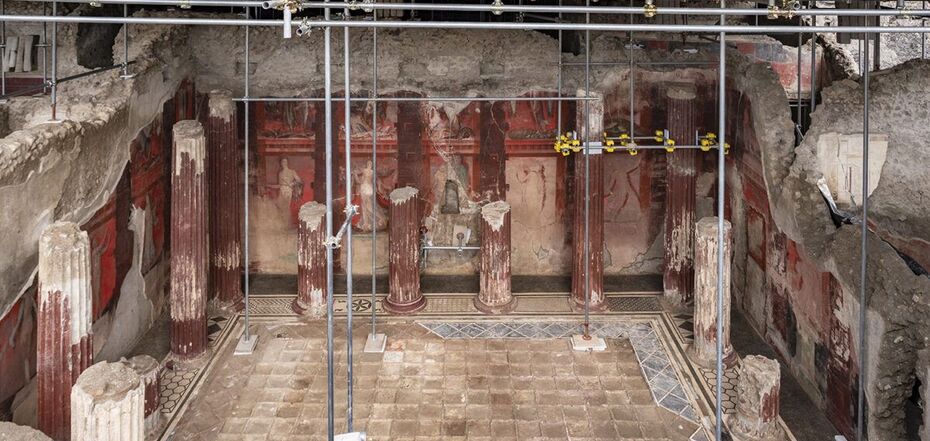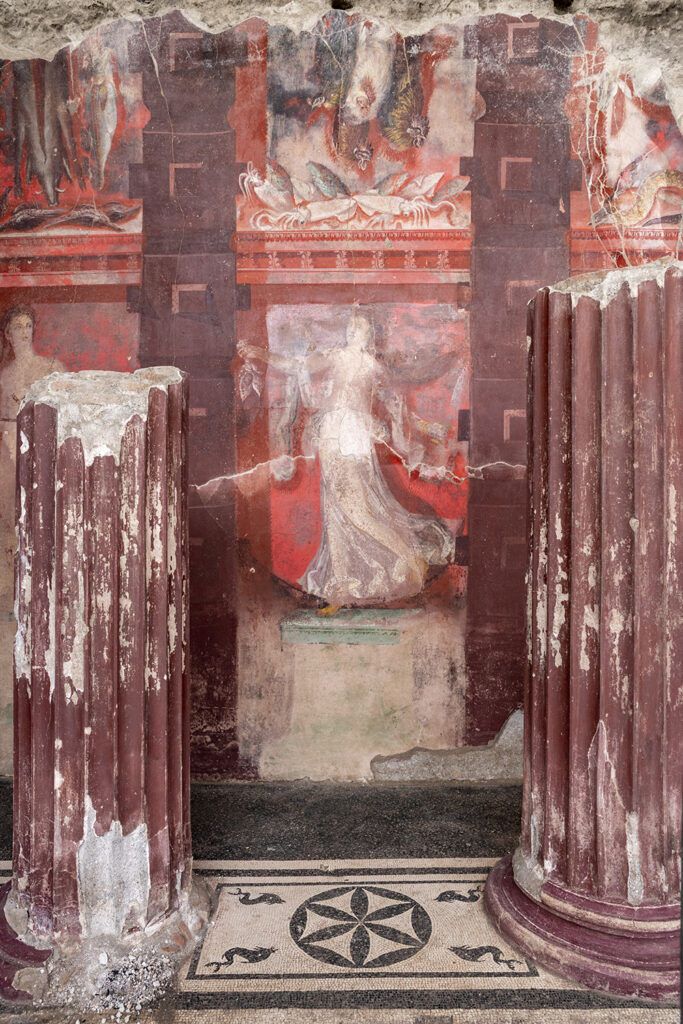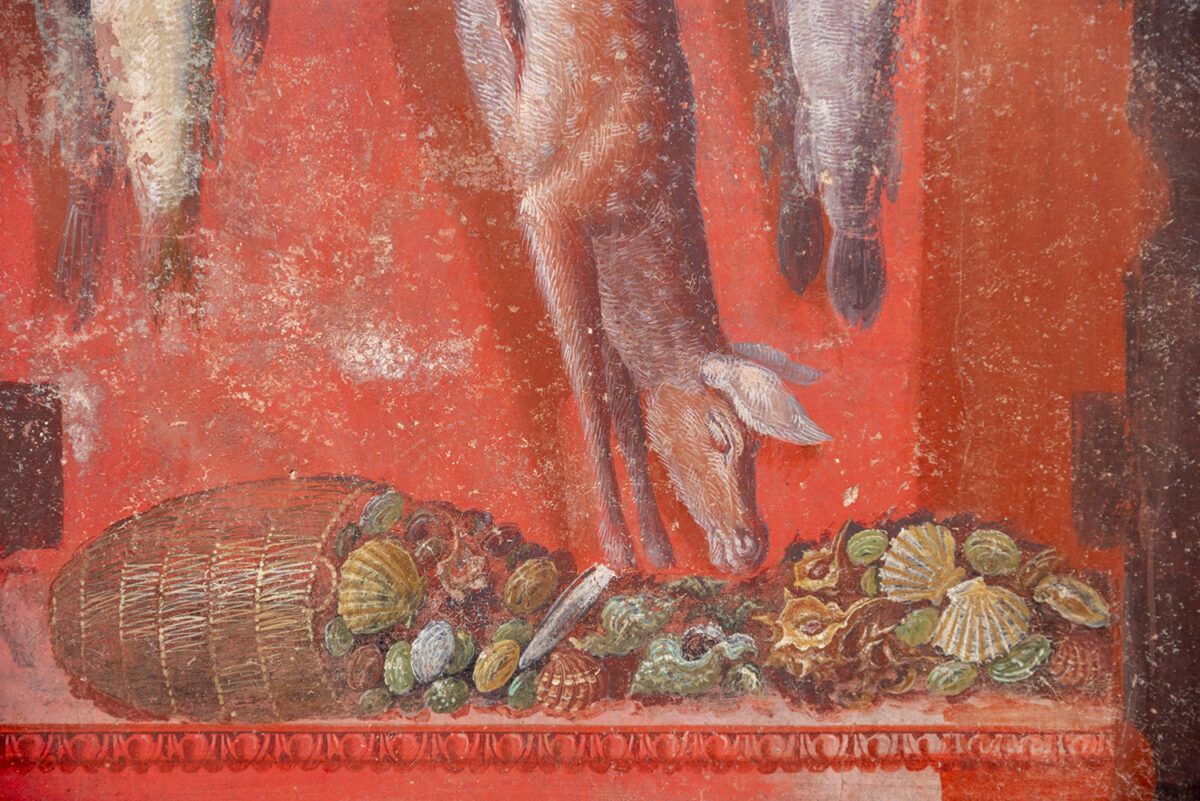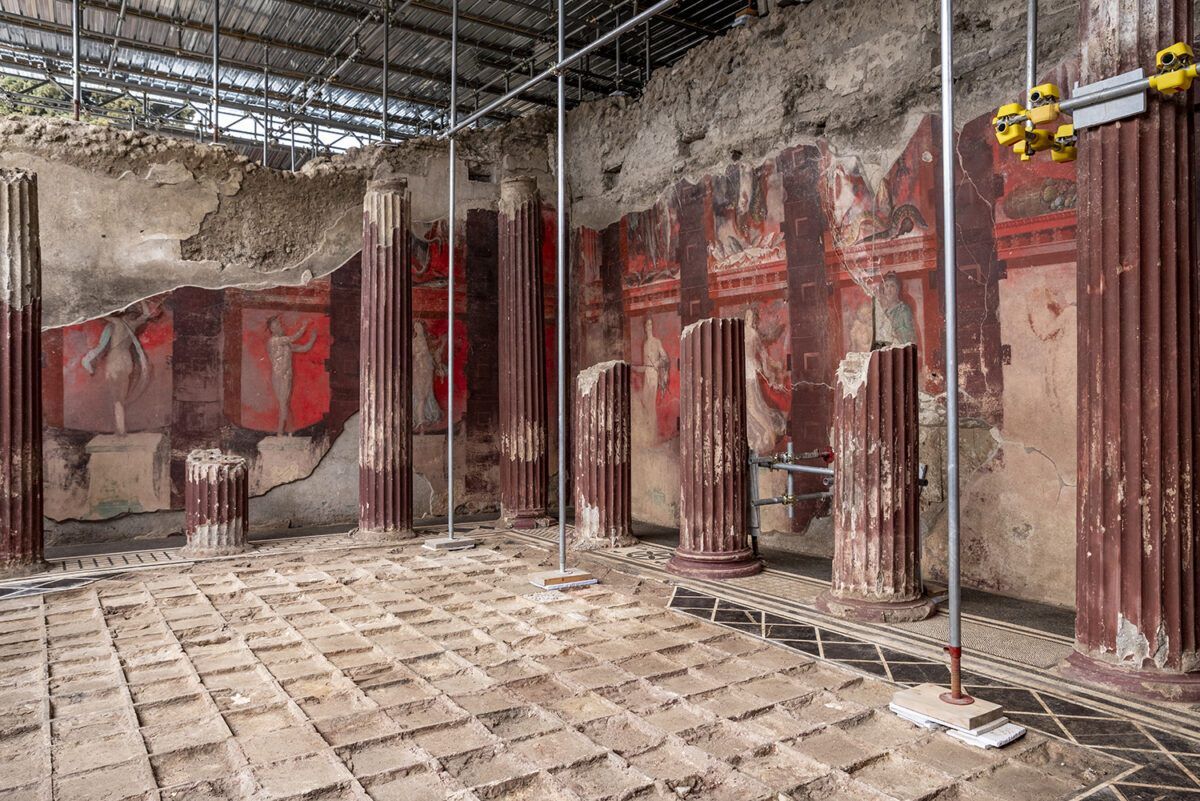News
Bloody ritual for the afterlife found on unique frescoes in Pompeii
Archaeologists in Pompeii have discovered rare life-size frescoes that offer fresh insight into religious rituals in the ancient city before it was destroyed by Mount Vesuvius in 79 AD. The researchers discerned a bloody ritual for the afterlife in the images they found.
The well-preserved painting, dating from the first century BC, contains a large-scale frieze. The frescoes depict vivid rituals for the followers of Dionysus, the ancient Greek god of wine, fertility, theater, and religious ecstasy, Reuters reports.
A huge painting was discovered in the banquet hall of the House of Thiasus in Region IX of Pompeii. This find is considered one of the most important in more than a century, and experts compare it to the famous images of the Villa of Mysteries.
The almost life-sized fresco, known as a "megalography" (the word comes from the Greek meaning "large painting"), covers three walls of the banquet hall, and the fourth wall overlooks the garden, according to the Pompeii Archaeological Park.
Experts describe that the work of art depicts a procession in honor of Dionysus, which includes menades, or his female followers, depicted as ecstatic dancers and fierce hunters. They are carrying slaughtered goats on their shoulders and rattling their sabers.
Among the women are young satyrs (mythological half-goats, half-humans) who create music and perform a ritual wine sacrifice, ArchaeologyNews adds.
In the center of the fresco is an elderly satyr, a companion of Dionysus, who holds a torch, standing next to a young woman who is undergoing a mystical ritual. Researchers note that this ancient cult, which dates back to the classical Greeks of the fifth century BC, is called a "mystery" because these practices were kept secret from outsiders.
According to experts, this fresco has given researchers a new key to what happened during the rites. The Roman initiates may have hunted, just like the Greek before them. The frescoes show that these mysterious rites echo the ancient connection between Dionysus and wild animals, LiveScience writes.
The wall paintings, in bright reds and deep colors, are part of a broader Roman tradition of Dionysius worship. This tradition has its roots in early Greek mystical cults that promised their members a mystical experience and a form of spiritual resurrection, scientists say.
In addition to the banquet hall, a reception room with scenes from the Trojan War, a sacrarium (sanctuary) showing the four seasons and agricultural allegories, and a large complex of baths were also found in the house of Thiasus.
The team of experts continues to explore the site. Nevertheless, the fresco of the house of Thiasus is now available to visitors as part of the ongoing excavation site tours in Pompeii.
The fresco corresponds to the second style of Pompeian wall painting, which was common between 40-30 BC.
Only verified information is available on the OBOZ.UA Telegram channel and Viber. Do not fall for fakes!






























